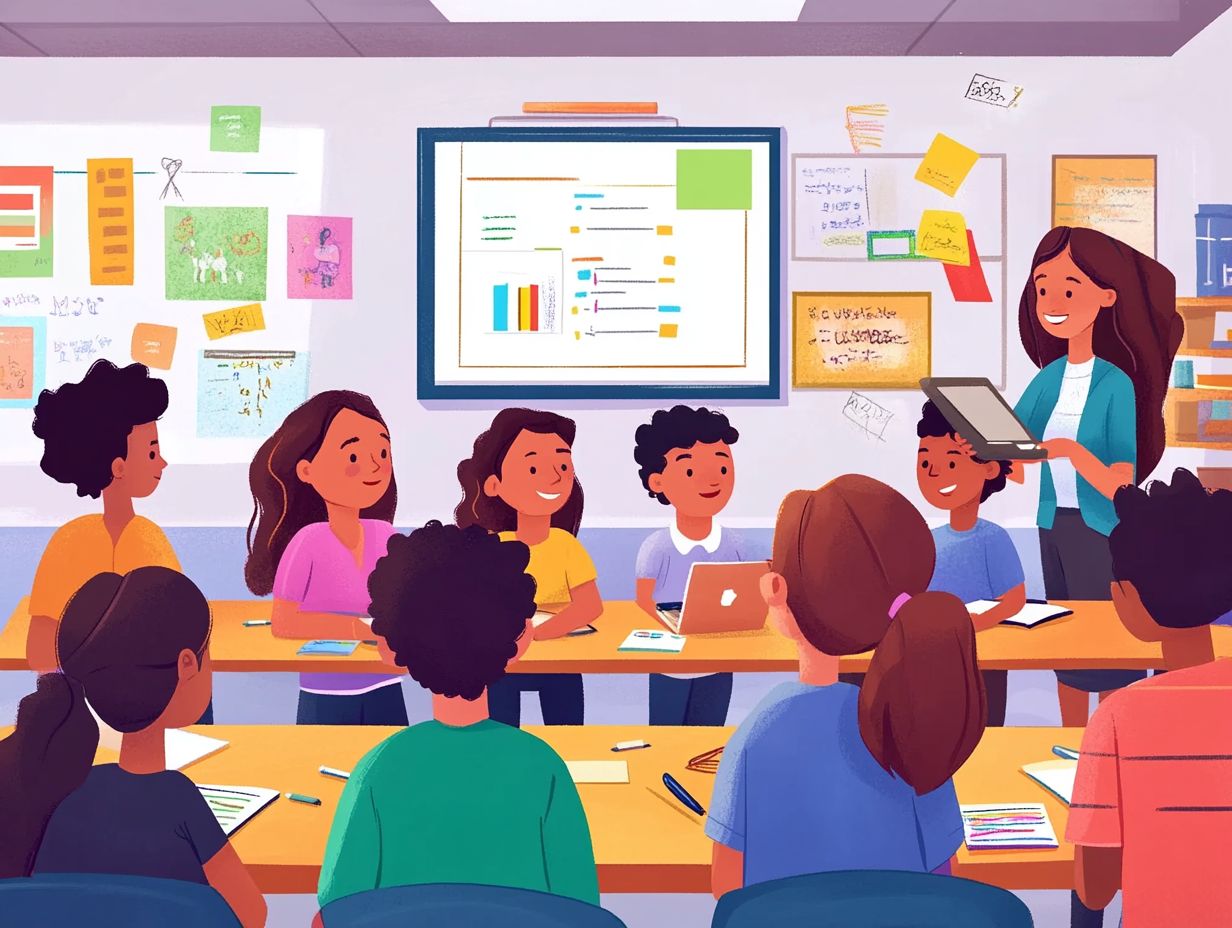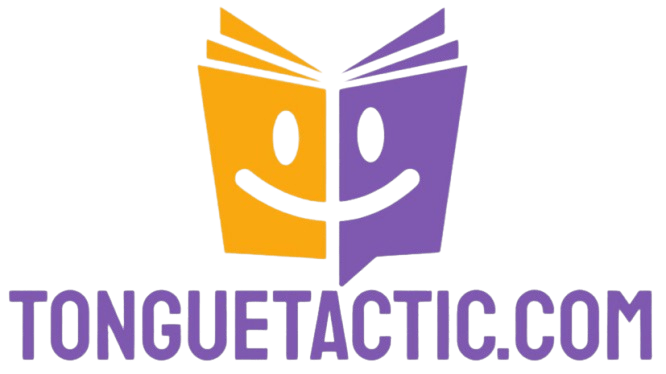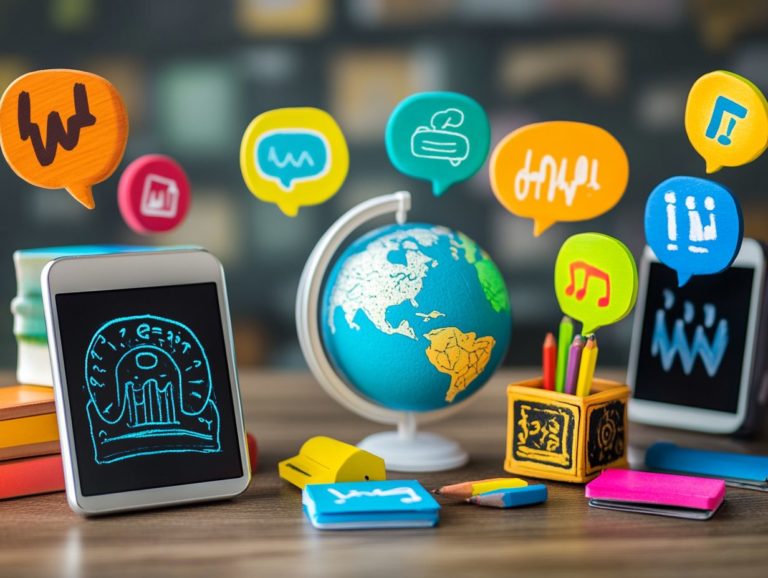the benefits of interactive language courses
In today s interconnected world, mastering a new language is essential for navigating diverse cultures and opportunities. Interactive language courses provide a dynamic and engaging approach to learning, significantly enhancing your vocabulary, cultural understanding, and communication skills.
This article delves into the myriad benefits of these courses, from elevating your language proficiency to fostering a deeper cultural awareness. You ll also discover the various types of courses available, tips for selecting the right one, and strategies to ensure your success in mastering a new language.
Dive in and discover endless possibilities for your language journey!
Contents
- Key Takeaways:
- Benefits of Interactive Language Courses
- Types of Interactive Language Courses
- Choosing the Right Interactive Language Course
- Tips for Success in Interactive Language Courses
- Frequently Asked Questions
- What are the benefits of interactive language courses?
- How do interactive language courses help improve language skills?
- Do interactive language courses cater to different learning styles?
- Can interactive language courses be personalized to my learning needs?
- How are interactive language courses better than traditional classes?
- Are there any additional benefits of interactive language courses?
Key Takeaways:

- Interactive language courses improve language proficiency by providing a dynamic and engaging learning experience.
- These courses enhance communication skills by promoting real-life interactions and practical application of language skills.
- Participating in interactive language courses increases cultural awareness and understanding, leading to more effective cross-cultural communication.
What are Interactive Language Courses?
Interactive language courses are innovative educational programs designed to improve how you learn a language through cutting-edge technology and captivating multimedia resources. These courses use various tools, including educational games and speech recognition software, to provide you with immersive experiences and immediate feedback.
By utilizing the latest advancements in technology, they foster interactive learning environments tailored to your unique learning style. This gives you the power to enhance your language skills effectively. Whether you prefer online platforms or in-person classes, these interactive language courses are designed to meet the needs of today s learners, ensuring that your language learning experience is both personalized and flexible.
These platforms seamlessly integrate real-world scenarios, enabling you to practice vocabulary and grammar in context. Take Duolingo, for instance; it transforms learning into a game-like experience through gamification, which means turning learning into a game, making it fun and engaging. Meanwhile, Babbel focuses on conversation skills with structured dialogues, while Rosetta Stone encourages you to think and respond entirely in the target language through immersive techniques.
Such methodologies underscore the effectiveness of interactive courses, as you actively participate rather than simply absorbing information. This level of engagement not only boosts retention but also builds your confidence, making the process of language acquisition dynamic and enjoyable.
Benefits of Interactive Language Courses
Interactive language courses present you with a wealth of advantages, including enhanced language proficiency, improved cognitive abilities, and greater cultural sensitivity—qualities that employers in today’s global marketplace highly value. For a deeper understanding, consider exploring the benefits of learning a language in context.
These courses also provide an engaging platform for interactive learning, enabling you to practice your language skills and refine your communication abilities. By nurturing bilingualism, these programs play a pivotal role in your personal growth and professional development, equipping you for various career opportunities in international business and beyond.
Improving Language Proficiency
Improving your language proficiency is at the heart of interactive language courses, and this is achieved through a range of engaging exercises and immediate feedback mechanisms designed to keep you actively involved. These methods empower you to practice language skills in real-life scenarios, leading to a richer understanding of grammar, vocabulary, and pronunciation.
For example, as a language learner, you can take advantage of speech recognition tools that evaluate your pronunciation and fluency in real time, offering instant corrections and suggestions. Likewise, collaborative learning environments like online platforms that encourage peer interactions and group activities allow you to put your skills to the test in discussions and projects.
Techniques such as gamified quizzes enhance your retention, motivating you to practice through scores and rewards. By integrating these technologies into your learning, you can immerse yourself in contextual experiences where you not only grasp linguistic rules but also internalize them through repeated practice and social engagement.
This approach can significantly elevate your overall language acquisition journey.
Start your journey today and unlock a world of opportunities!
Enhancing Communication Skills
Enhancing your communication skills is a vital outcome of interactive language courses. Hands-on experiences allow you to engage with native speakers and appreciate cultural differences.
This interactive learning approach creates an environment that encourages dialogue and practical language use. Such skills are essential for effective communication in diverse settings.
Get ready to practice real-life interactions through role-playing scenarios that simulate situations you might encounter in a foreign country. These activities strengthen your speaking and improve your body language. Both are critical for sharing feelings across cultures.
Group discussions offer a platform to express your viewpoints. This facilitates a deeper understanding of various perspectives. Programs like those offered by the Goethe Institute blend cultural workshops with language classes, showcasing how an emphasis on cultural sensitivity can foster greater empathy and enhance your communication abilities.
These immersive experiences ensure that you master the language while grasping the underlying cultural context that shapes interactions.
Increased Cultural Awareness

Increased cultural awareness is one of the most valuable benefits of engaging in interactive language courses, as highlighted in the benefits of language immersion programs. Such courses often come to life through hands-on experiences and innovative technology that connects you with authentic cultural content.
By incorporating travel experiences and real-life scenarios, you gain essential insights into the cultural contexts where the language thrives. This significantly enriches your learning journey.
These courses also use virtual tours and collaborative projects, offering you a firsthand glimpse into the daily life, traditions, and values of the target culture.
Through these captivating methods, you not only master the mechanics of the language but also appreciate its intricate cultural differences. Understanding these contexts is crucial; they shape how the language is spoken and interpreted, paving the way for more effective communication.
Technology is pivotal in linking you with native speakers, fostering cultural exchanges that deepen your understanding and appreciation of the language’s roots.
Types of Interactive Language Courses
Explore a wide range of exciting interactive language courses available today! From online options to in-person classes, each presents distinct benefits tailored to your flexible language education needs.
Online courses let you benefit from self-paced modules and a treasure trove of multimedia resources at your fingertips. In-person classes offer the invaluable opportunity for direct interaction with instructors and fellow learners, elevating the collaborative learning experience to new heights.
Online Courses
Online courses present a convenient and flexible approach to language learning. They allow you to engage with self-paced modules and a variety of interactive tools that truly enhance your educational experience.
These courses often incorporate multimedia resources, quizzes, and discussion forums that foster collaboration and engagement among students. This creates a vibrant learning community.
By leveraging platforms like Duolingo, which gamifies language acquisition, or Coursera, offering access to university-level courses, you can tailor your studies to fit your personal schedule and preferred learning style.
The ability to revisit complex topics at your pace ensures a deeper understanding and allows you to grasp concepts more thoroughly.
Interactive features, such as live chats or virtual classrooms, encourage real-time collaboration with peers and instructors. This enriches your learning journey.
Jump into this modern digital education landscape and connect with learners worldwide! With diverse resources, it’s accessible and appealing to a wide range of learners seeking both personal and professional growth.
In-Person Classes
In-person classes create a dynamic environment for interactive learning. You engage directly with instructors and peers, enhancing collaborative learning while immersing yourself in the language.
These classes often include group activities, role-playing, and face-to-face discussions, all enriching your language learning journey.
One key advantage is the immediate feedback you receive, allowing you to adjust your pronunciation and grammar in real-time. This is essential for mastering a new language.
The social connections you form can boost your motivation and retention, making the learning experience not just effective, but genuinely enjoyable.
Activities are tailored to various learning styles, ensuring that whether you thrive on visual aids, auditory input, or kinesthetic tasks, you’ll find the best way to absorb new information.
This approach fosters deeper engagement and creates a sense of belonging, making in-person classes a cornerstone of successful language acquisition.
Choosing the Right Interactive Language Course
Selecting the ideal interactive language course requires careful consideration of several factors that align with your learning objectives and preferences.
Make sure the course you choose supports your language acquisition journey effectively.
Key elements to evaluate include the course format, your preferred learning style, and availability of personalized options that match your unique motivations and interests.
Factors to Consider

When choosing an interactive language course, keep in mind your personal learning goals, preferred teaching methodologies, and the course’s reputation as reflected in user reviews. Analyzing these elements helps you make informed decisions that align with your educational goals.
Your personal learning goals will dictate the type of course that suits you. If you’re aiming for conversational fluency, prioritize a program that offers practice speaking with others. Conversely, if you’re preparing for a standardized test, a structured approach with grammar-focused lessons would be more appropriate.
Next, consider whether the teaching methods resonate with your learning style. Do you thrive in a collaborative classroom, or do you prefer the flexibility of self-paced online modules? This choice can significantly impact your retention and overall engagement.
The course’s reputation is crucial. Delve into user reviews for insights into the effectiveness of teaching methods and learner satisfaction. Reading testimonials and connecting with former participants can provide a clearer picture of what to expect.
Personalized Learning Options
Personalized learning options in interactive language courses provide flexibility, allowing you to tailor your experience to your specific needs and preferences. This significantly enhances your motivation and engagement.
You might encounter adaptive learning paths, one-on-one tutoring, or customized study plans that align with your unique language goals. Platforms like Duolingo and Babbel exemplify how personalized experiences come to life.
Duolingo s adaptive algorithms adjust the difficulty based on your progress, ensuring you remain both challenged and engaged. Platforms that allow video chats with native speakers offer tailored conversation practice, enhancing your comprehension and fluency.
This level of personalization fosters ownership over your learning journey, proven to boost motivation and lead to improved language retention and practical application.
Tips for Success in Interactive Language Courses
Achieving success in interactive language courses requires a strategic approach.
Set clear goals, effectively utilize available resources, and maintain high motivation as you navigate your learning journey.
By embracing these strategies, you can maximize your language practice and fully reap the benefits of the interactive nature of these courses.
Don t wait join our courses now to start speaking with confidence!
Setting Goals and Staying Motivated
Setting specific goals and maintaining your motivation are essential for achieving success in interactive language courses. These elements not only guide you toward personal growth but also facilitate effective language practice.
By establishing achievable milestones, you can stay focused and enhance your engagement in these interactive learning environments.
To help you in this endeavor, consider employing techniques like the SMART framework. SMART stands for Specific, Measurable, Achievable, Relevant, and Time-bound. For example, instead of vaguely stating that you want to improve your vocabulary, you could commit to learning 10 new words each week.
Motivational tools like language exchange partners or themed study groups can create a supportive community, transforming your journey into a shared experience rather than a solo mission. These exciting strategies keep you committed and eager to learn!
These methods reinforce your accountability and ultimately keep you enthusiastic and on track as you navigate your language learning adventure.
Using Resources and Practice Opportunities
Using available resources and practice opportunities is crucial for maximizing the benefits of interactive language courses. These elements enhance your language skills and provide practical experience.
Engaging with interactive tools, completing online activities, and participating in language exchange programs can greatly enrich your learning journey. Consider exploring various online platforms that offer live conversation practice, such as Tandem or HelloTalk, where you can connect with native speakers and receive real-time feedback.
Interactive quizzes and games on sites like Duolingo and Babbel not only make learning enjoyable but also help you remember words better and grasp grammatical concepts.
Joining community groups or forums, like Meetup or local language clubs, gives you the chance to practice speaking in social settings, further boosting your comfort and proficiency.
Consistent engagement with these resources is essential. Regularly immersing yourself in the language solidifies your comprehension and encourages fluency over time.
Frequently Asked Questions

What are the benefits of interactive language courses?
Interactive language courses offer a more engaging and immersive learning experience, highlighting the importance of interactive elements in language courses, allowing students to practice and improve their skills in a dynamic and interactive way.
How do interactive language courses help improve language skills?
With interactive language courses, students have the opportunity to practice speaking, listening, reading, and writing in real-time settings, which can greatly improve their language skills and fluency through the benefits of language learning games.
Do interactive language courses cater to different learning styles?
Absolutely! Interactive language courses use various fun teaching methods and techniques, ensuring that students with different learning styles can benefit from the course.
Can interactive language courses be personalized to my learning needs?
Many interactive language courses offer personalized learning options, such as customizable lesson plans and one-on-one instruction, to cater to the specific needs and goals of each student.
How are interactive language courses better than traditional classes?
Interactive language courses offer a more dynamic and engaging learning environment compared to traditional classroom learning, highlighting the benefits of language exchange programs for more effective language acquisition and retention.
Are there any additional benefits of interactive language courses?
Yes! Interactive language courses often incorporate cultural elements and real-life scenarios, providing students with a well-rounded and practical understanding of the language and its cultural context.





